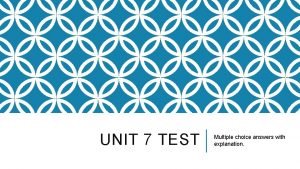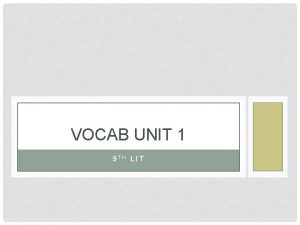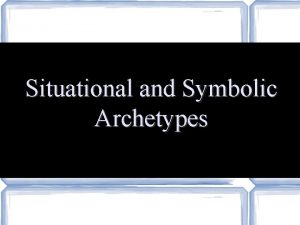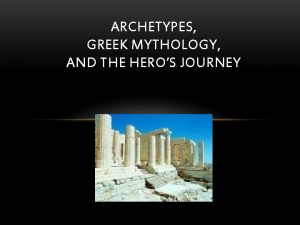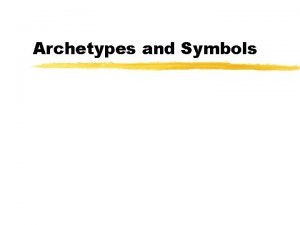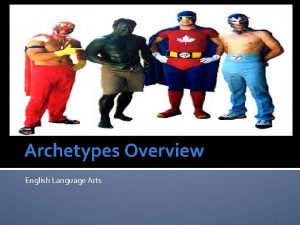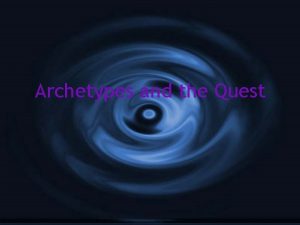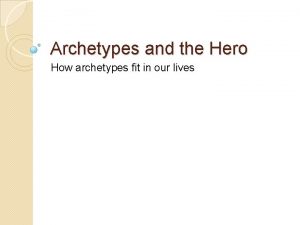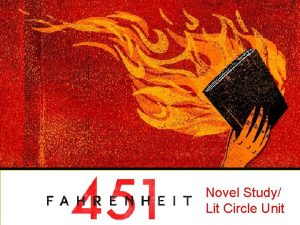World Lit Unit One Archetypes Archetypes and the










- Slides: 10

World Lit Unit One: Archetypes

Archetypes and the Collective Unconscious ►A common thread runs through the stories and histories of many cultures. ► These stories (myths, fables, folklore) stemmed from people’s desire to know about the unknown.

Why tell stories? ► To explain science and the elements of the natural world ► To explain the origins of good and evil ► To teach valuable moral lessons about good and evil ► To explain and justify human behavior ► To entertain ► As a religion

► Prototypes appeared…these models became known as “archetypes”. ► Swiss psychiatrist Carl Jung coined the term archetypes to mean innate, universal beliefs about a person, object, or concept.

► Jung called this idea that humans are born pre-disposed to certain beliefs the “Collective Unconscious”. ► That fact that people from all cultures and geographic locations hold similar conceptions, Jung claimed must be inherent biologically.

The archetypes persist in the human unconscious mind because even advanced humans have fantasies and fears. These fantasies and fears manifest themselves in dreams and nightmares. People all over the world have similar dreams and nightmares, hence, the collective unconscious.

Characteristics of Archetypes They are not individual but something we share with all of humanity. 2. They are the inherited part of being human, which connects us to our past and goes beyond our personal experience to a common source. 3. They are not directly knowable, but instead express themselves in forms. 1.

4. They grow out of people’s social, psychological, and biological being. 5. They are universal common traits. 6. They cannot be explained by interaction among cultures because geography and history often made this impossible. 7. They are recurrent, appearing in slightly altered forms to take present day situations and relate them to the past in order to find meaning in a contemporary world.

The Monomyth ► Mythologist Joseph Campbell defined “monomyth” as a three-fold rite of passage extending throughout human cultures. § 1. Separation § 2. Struggle/Initiation § 3. Return/Reintegration

► Monomyth patterns are played out in different contexts in various cultures: ►Stories (folklore, fables) ►Myths ►Rituals ►Dreams The tri-fold passage is told in the archetypal figure of the hero/heroine involved in a journey or quest.


